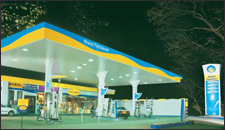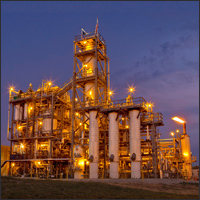 When oil prices started their downward journey, during the second half last fiscal, upstream companies heaved a sigh of relief, thinking that their subsidy burden will become lighter substantially. But that was not to be and instead their subsidy burden has gone up to reach an all time high with under recoveries touching a record high of Rs.161,029 crore for the year 2012-13. What is disturbing is the fact that the subsidy discount given by upstream companies was less when oil prices were at record $117.40 bbl in 2011-12 than it was during 2012-13 when average oil price was $110.74 bbl.
When oil prices started their downward journey, during the second half last fiscal, upstream companies heaved a sigh of relief, thinking that their subsidy burden will become lighter substantially. But that was not to be and instead their subsidy burden has gone up to reach an all time high with under recoveries touching a record high of Rs.161,029 crore for the year 2012-13. What is disturbing is the fact that the subsidy discount given by upstream companies was less when oil prices were at record $117.40 bbl in 2011-12 than it was during 2012-13 when average oil price was $110.74 bbl.
During the year 2012-13 under recoveries have gone up by 14%. This is despite being the fact that oil price more or less remained at lower level during 2012-13 than the average price prevailing in the previous year. Rupee depreciation during 2012-13 has also played its role in oil subsidy bill going up during 2012-13.
|
|
Under recoveries in petroleum products (in crore rupees)
|
|
Year
|
Total
under recoveries
|
Share of
the Govt.
|
Amount shared by
upstream companies
|
Amount absorbed by
OMCs
|
| 2010-11 |
78,190
|
41,000
|
30,297
|
6,893
|
| 2011-12 |
138,541
|
83,500
|
55,000
|
41
|
| 2012-13* |
161,029
|
101,000
|
60,000
|
29
|
| *Provisional figures |
|
Diesel has accounted for the major portion of the under recovery during 2012-13 at Rs. 92,061 crore. With government deciding to reduce the subsidy burden on diesel in a phased manner spread over the entire current fiscal, subsidy burden on this account may come down during 2013-14. However, rupee depreciation during the last two months may play spoilsport for the government (and also for upstream companies). Also upcoming 5 state Assembly elections and the next year’s general election may force the government to go slow on its price de-control measure.
|
Product-wise under recoveries (in crore rupees)
|
| Petroleum product |
2012-13 |
2011-12 |
| Diesel |
92,061 |
81,192 |
| LPG |
39,558 |
29,997 |
| Kerosene |
29,410 |
27,352 |
| Total |
161,029 |
138,541 |
|
|
Apart from the government, public sector upstream oil companies namely, Oil and Natural Gas Corporation (ONGC), Oil India Limited (OIL) and GAIL (India) Limited (GAIL) bear part of these under recoveries by way of price discount on crude oil and products. Among the upstream companies, more than 82% of the subsidy burden is borne by ONGC. ONGC’s subsidy burden for the year 2012-13 is whopping Rs. 49,421 crore while it earned a net profit of Rs. 20,926 crore. Minority shareholders and FIIs have started raising their voice against the government’s decision to indirectly use major portion of the listed company’s profit to fund its fiscal deficit.
|
|
How they shared discount burden in 2012-13
|
|
Company
|
Subsidy burden in
crore Rs (gross)
|
|
|
| ONGC |
49,421
|
82.37
|
20,926
|
| Oil India |
7,892
|
13.16
|
3,589
|
| Gail India |
2,687
|
4.47
|
4,022
|
| Total |
60,000
|
100
|
|
|
Petroleum products subsidy regime has affected the financial position of the oil marketing companies who had to resort to massive market borrowing to fund their working capital needs. In fact, the OMCs could report profits only as a result of getting significant compensation of their under-recoveries from the Government and the public sector upstream oil companies. Further, upstream companies are also impacted by the heavy subsidy burden affecting their ability to execute their projects on hand and at times forcing them to borrow from the market for funding their projects. Uncertainty over their subsidy burden has also affected these companies’ valuation at the bourses. The government should at least bring about transparency in subsidy burden sharing methodology to calm the investor’s ire.



 When oil prices started their downward journey, during the second half last fiscal, upstream companies heaved a sigh of relief, thinking that their subsidy burden will become lighter substantially. But that was not to be and instead their subsidy burden has gone up to reach an all time high with under recoveries touching a record high of Rs.161,029 crore for the year 2012-13. What is disturbing is the fact that the subsidy discount given by upstream companies was less when oil prices were at record $117.40 bbl in 2011-12 than it was during 2012-13 when average oil price was $110.74 bbl.
When oil prices started their downward journey, during the second half last fiscal, upstream companies heaved a sigh of relief, thinking that their subsidy burden will become lighter substantially. But that was not to be and instead their subsidy burden has gone up to reach an all time high with under recoveries touching a record high of Rs.161,029 crore for the year 2012-13. What is disturbing is the fact that the subsidy discount given by upstream companies was less when oil prices were at record $117.40 bbl in 2011-12 than it was during 2012-13 when average oil price was $110.74 bbl.










